Antonio Manciolino in his "Opera Nova" which is a treatise on fencing from the Bologna school, published in 1531, already speaks of fencing with the stiletto. These weapons were intended to inflict deep wounds, difficult to treat, and to be able to pass through the rings of chainmail.
The size and robustness of this dagger clearly show that it was designed for combat and not as a decorative object. The whole weapon has a beautiful black patina that I have chosen to respect.
BLADE: this is the blade whose shape is typical of stilettos of this period. After a first part worked in the shape of a baluster over 2 cm, the blade takes on a very sharp triangular section. At the beginning of the two triangular faces, we note a remnant of a punch mark (very difficult to photograph, but present) which resembles a flower. We find this punch mark on the blade of a hunting sword from the 16th century which was in the weapons cabinet of Emperor Charles V. It is listed under number G.138 of the inventory of the Real Armeria de Madrid
Length of the blade = 17.3 cm Width near the guard 9.8 mm thickness near the guard = approximately 9mm
GUARD: It is a guard with 2 quillons in the shape of balls ending in a small button, around an octagonal center. These small buttons are not only decorative but also allow to deliver a sharp and painful blow to the bones (hands, wrists or skull ...)
HILT : It is in one piece, fuse and pommel. In the shape of a double baluster, alternating with a decoration of twisted rings. The pommel has a bulbous shape topped with a small button on which the tang of the blade is riveted. This small button can also have the same use as those which end the quillons.
Spanish stilettos dating from the first half of the 16th century are much rarer on the market than Italian stilettos from the 17th. It is obvious that the presence on the blade of a punch which is also found on certain weapons made for the Emperor Charles V is a sign of quality manufacturing.
Shipping costs France and Europe 20 €
Ref CX-25/2-02.


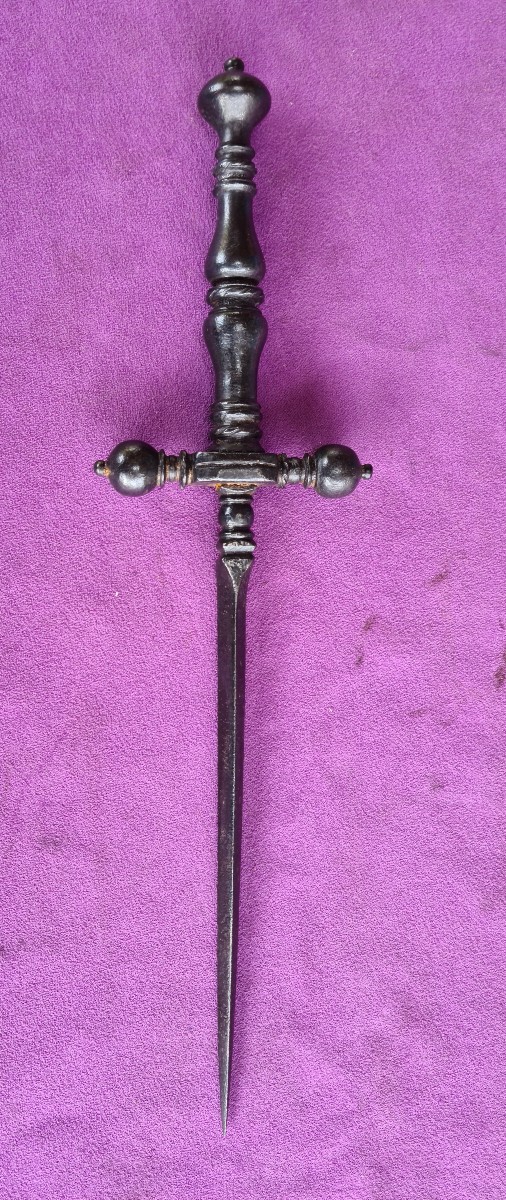

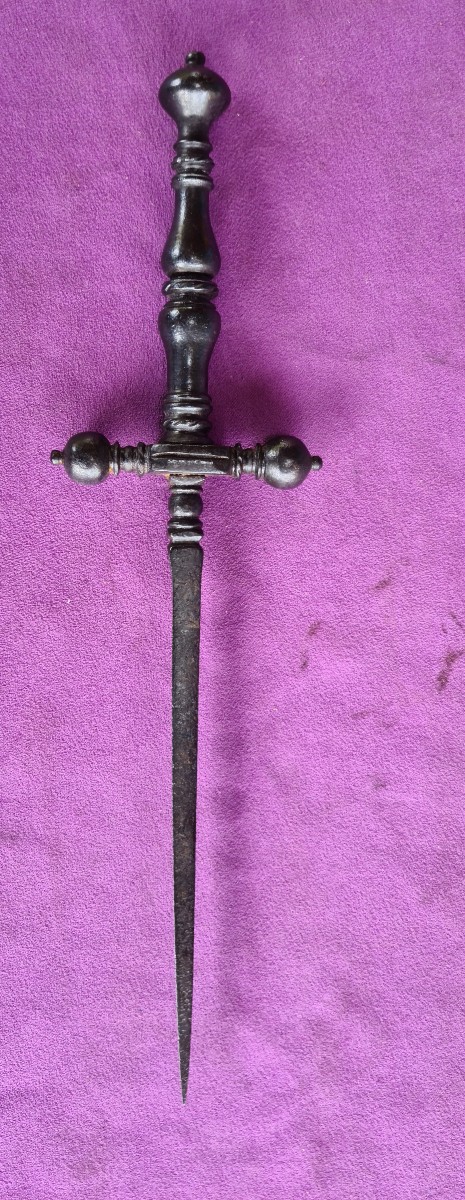

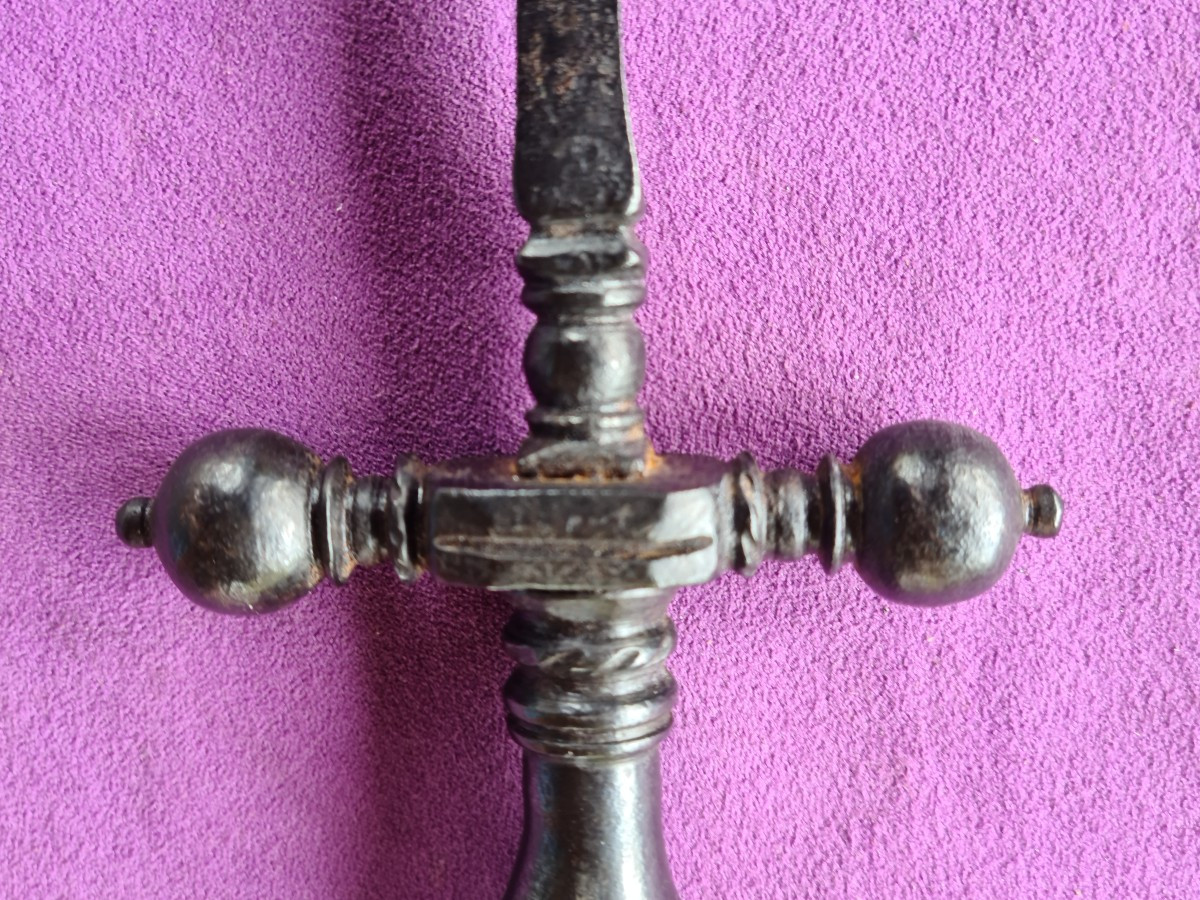
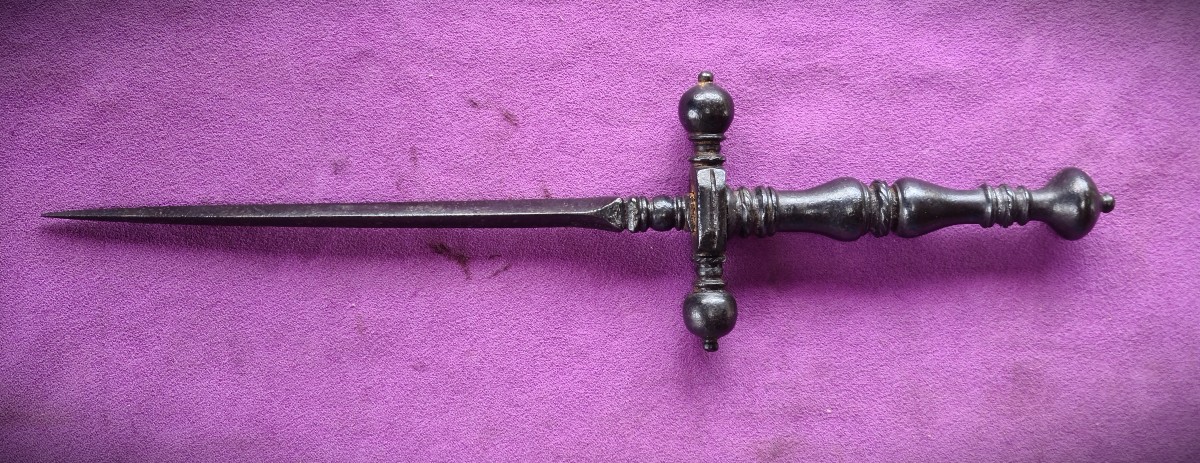
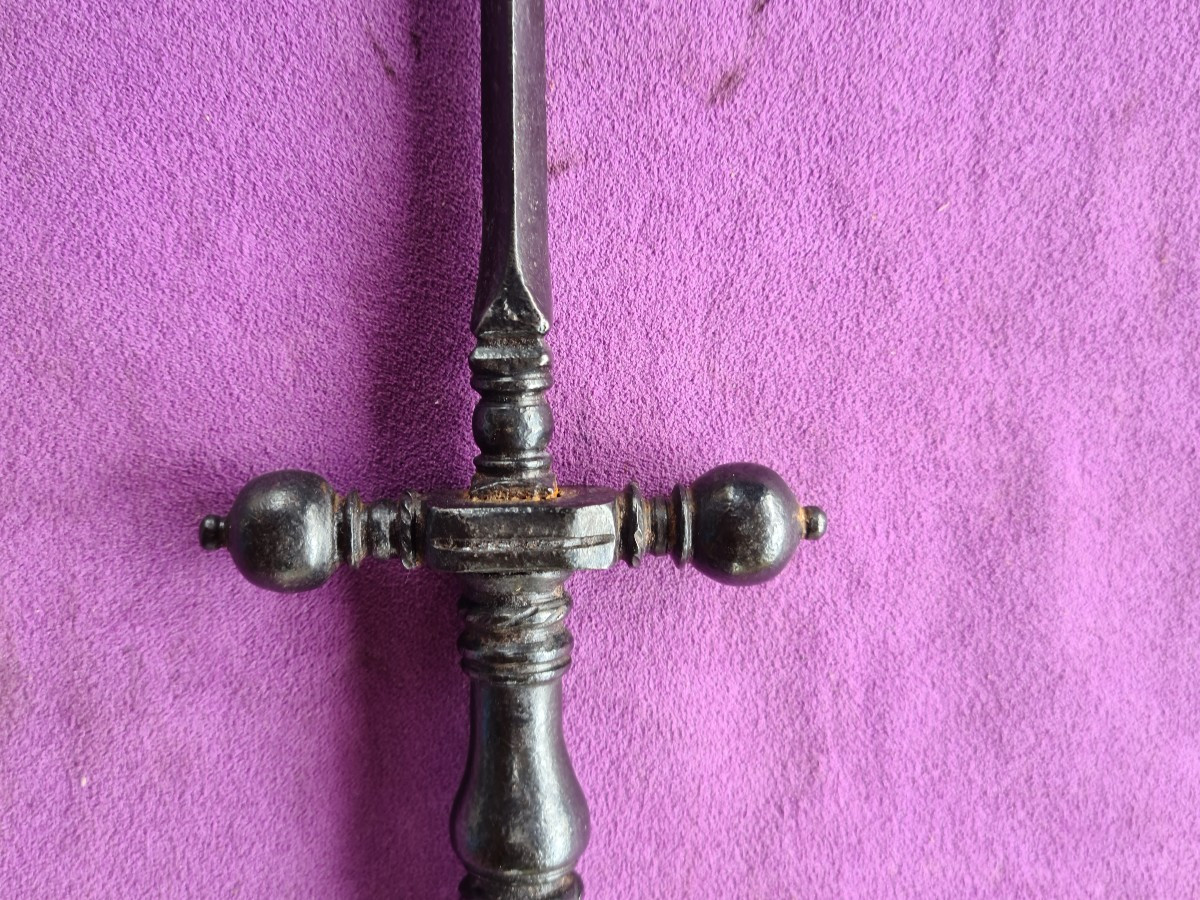
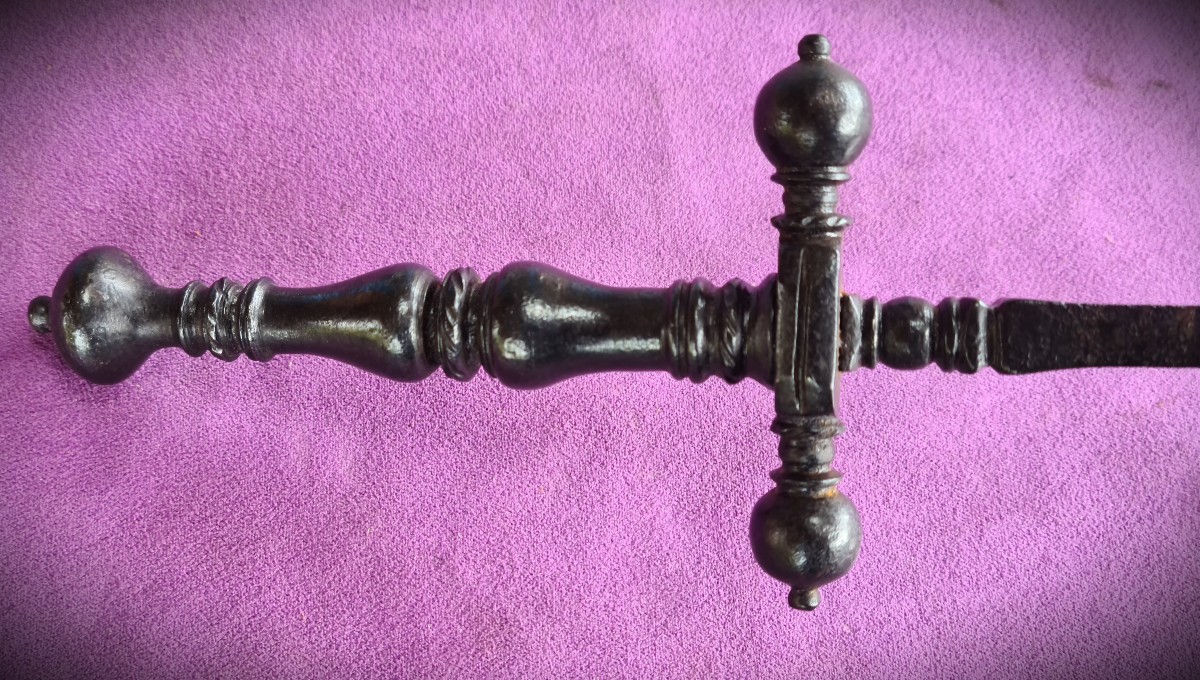
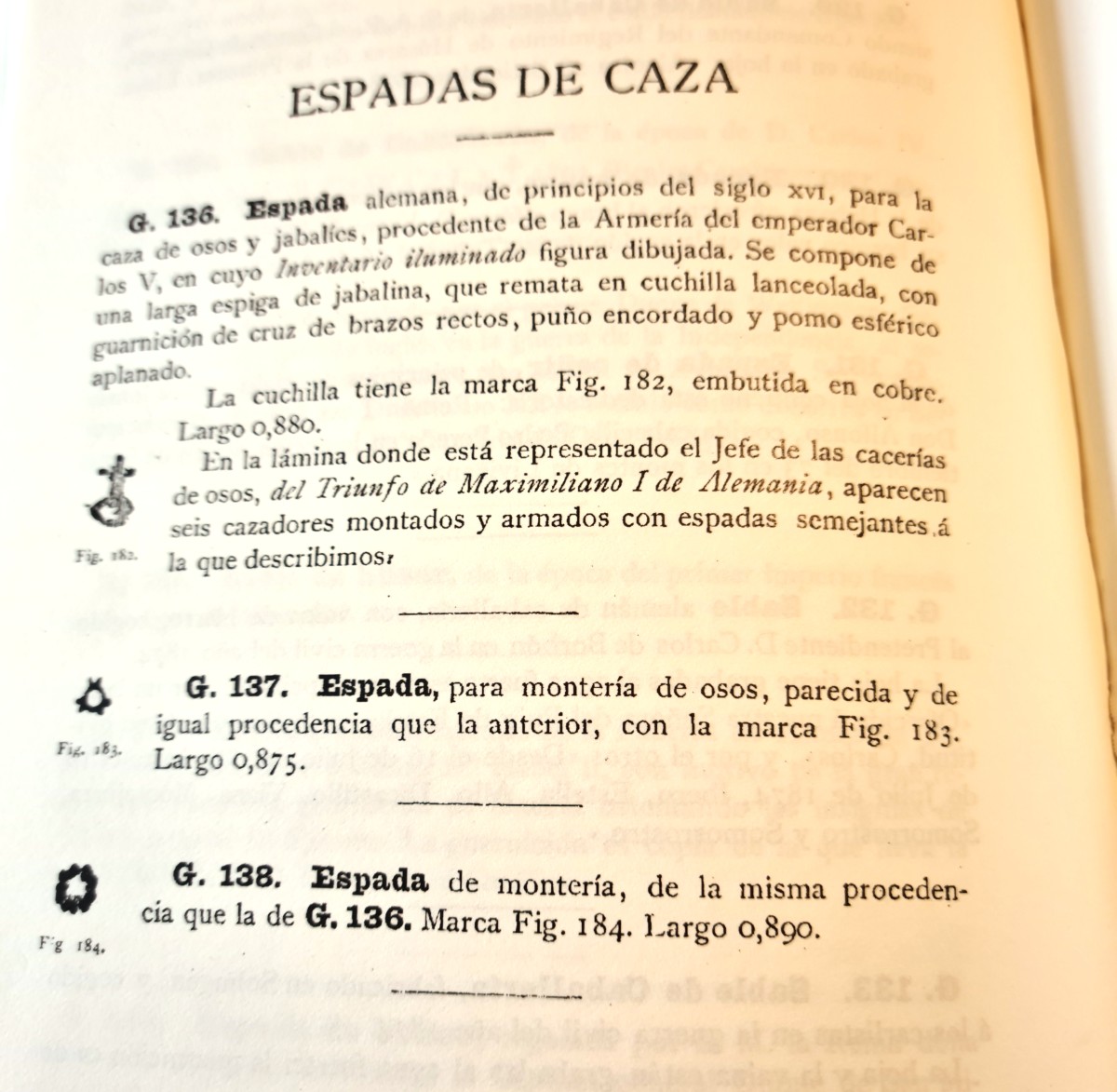














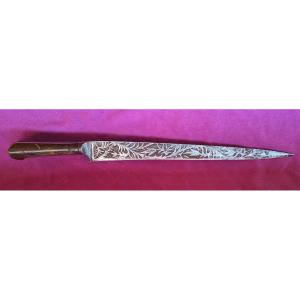

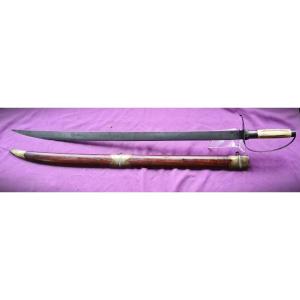

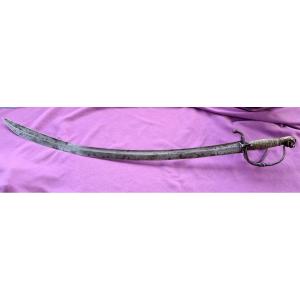
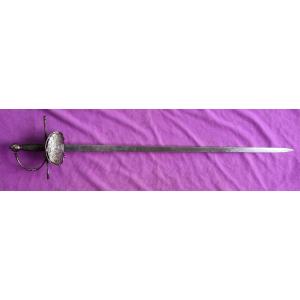


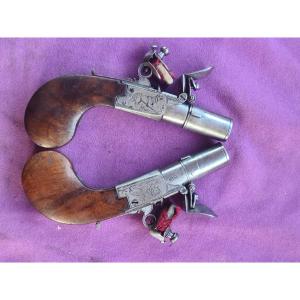
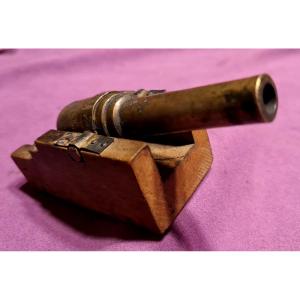


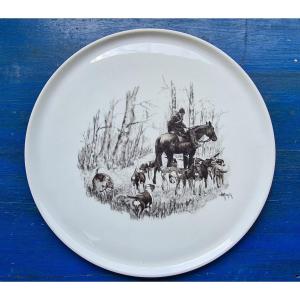

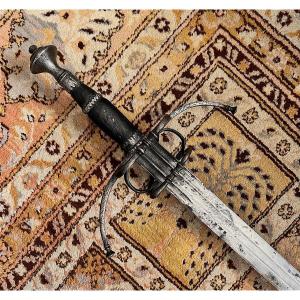

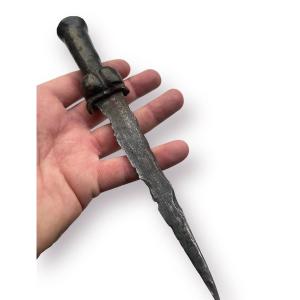




 Le Magazine de PROANTIC
Le Magazine de PROANTIC TRÉSORS Magazine
TRÉSORS Magazine Rivista Artiquariato
Rivista Artiquariato